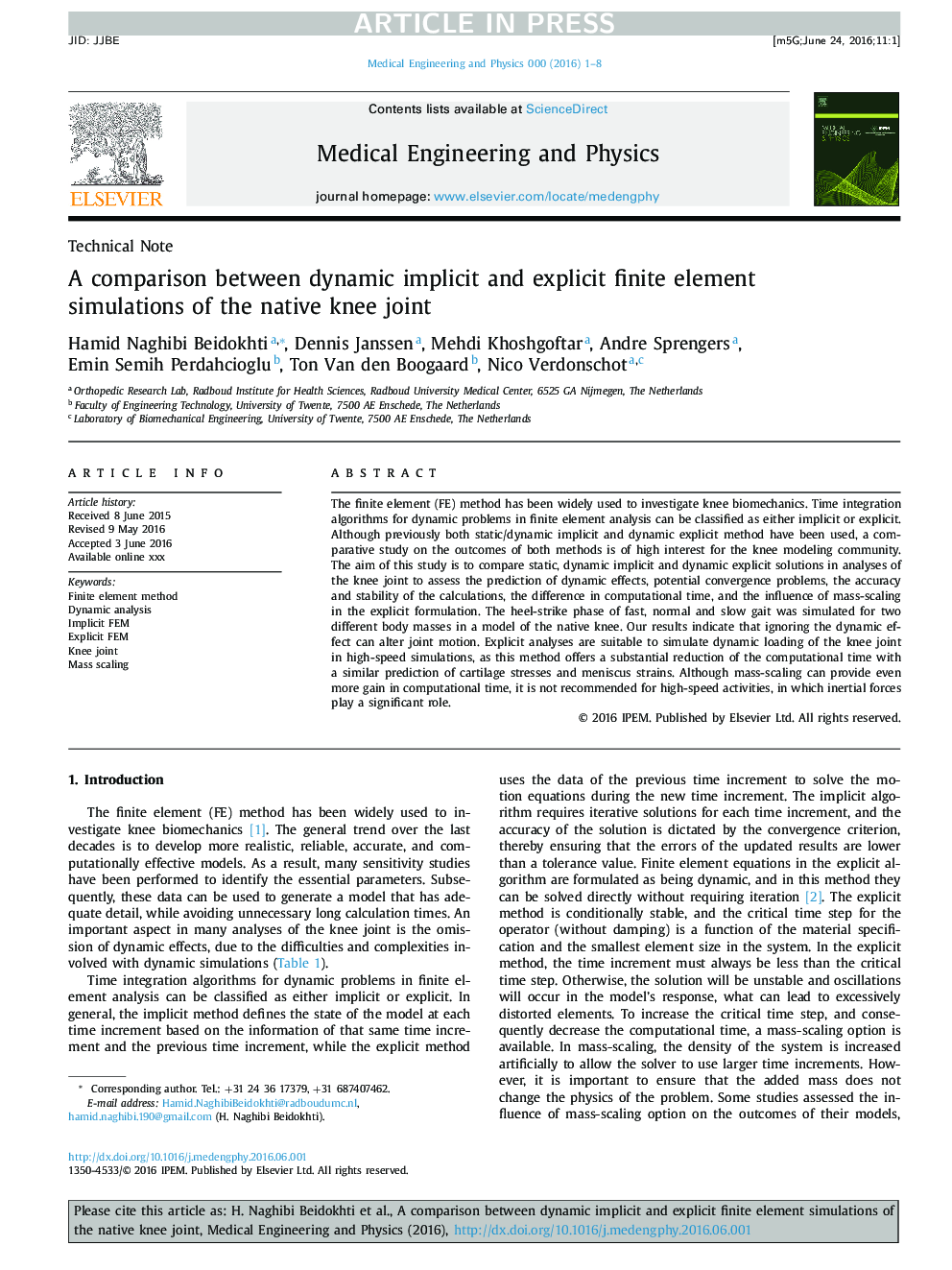| کد مقاله | کد نشریه | سال انتشار | مقاله انگلیسی | نسخه تمام متن |
|---|---|---|---|---|
| 5032800 | 1369997 | 2016 | 8 صفحه PDF | دانلود رایگان |
عنوان انگلیسی مقاله ISI
A comparison between dynamic implicit and explicit finite element simulations of the native knee joint
ترجمه فارسی عنوان
مقایسه شبیه سازی عناصر ضمنی پراکنده و صریح مفصلی مفصل زانوی بومی
دانلود مقاله + سفارش ترجمه
دانلود مقاله ISI انگلیسی
رایگان برای ایرانیان
کلمات کلیدی
موضوعات مرتبط
مهندسی و علوم پایه
سایر رشته های مهندسی
مهندسی پزشکی
چکیده انگلیسی
The finite element (FE) method has been widely used to investigate knee biomechanics. Time integration algorithms for dynamic problems in finite element analysis can be classified as either implicit or explicit. Although previously both static/dynamic implicit and dynamic explicit method have been used, a comparative study on the outcomes of both methods is of high interest for the knee modeling community. The aim of this study is to compare static, dynamic implicit and dynamic explicit solutions in analyses of the knee joint to assess the prediction of dynamic effects, potential convergence problems, the accuracy and stability of the calculations, the difference in computational time, and the influence of mass-scaling in the explicit formulation. The heel-strike phase of fast, normal and slow gait was simulated for two different body masses in a model of the native knee. Our results indicate that ignoring the dynamic effect can alter joint motion. Explicit analyses are suitable to simulate dynamic loading of the knee joint in high-speed simulations, as this method offers a substantial reduction of the computational time with a similar prediction of cartilage stresses and meniscus strains. Although mass-scaling can provide even more gain in computational time, it is not recommended for high-speed activities, in which inertial forces play a significant role.
ناشر
Database: Elsevier - ScienceDirect (ساینس دایرکت)
Journal: Medical Engineering & Physics - Volume 38, Issue 10, October 2016, Pages 1123-1130
Journal: Medical Engineering & Physics - Volume 38, Issue 10, October 2016, Pages 1123-1130
نویسندگان
Hamid Naghibi Beidokhti, Dennis Janssen, Mehdi Khoshgoftar, Andre Sprengers, Emin Semih Perdahcioglu, Ton Van den Boogaard, Nico Verdonschot,
